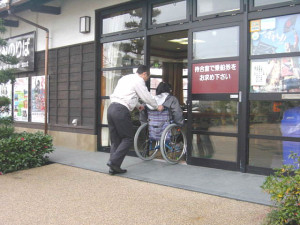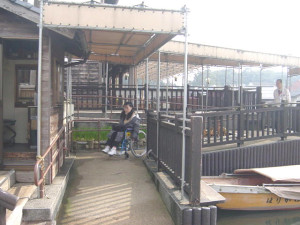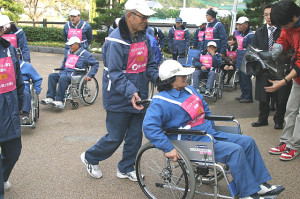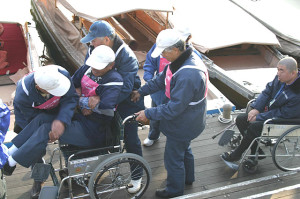Basic data
| Facility summary and accessibility conditions | Parts of the moat surrounding Matsue Castle, built in 1611 along with the castle, still remain. |
||
|---|---|---|---|
| Address | 507-1 Kuroda-chō, Matsue, Shimane Horikawa Sightseeing Boat Tour Administration Office | ||
| Telephone | 0852-27-0417 | ||
| Fax | 0852-27-0341 | ||
| URL | http://www.matsue-horikawameguri.jp/ | ||
| Reception hours | March 1 - June 30: 9:00 - 17:00, every 15 minutes July 1 - August 31: 9:00 - 18:00, every 15 minutes September 1 - October 10: 9:00 - 17:00, every 15 minutes October 11 - November 30: 9:00 - 16:00, every 15 minutes December 1 - End of February: 9:00 - 16:00, every 20 minutes | ||
| Regular holidays | No(Depending on the weather, cancelation may occur.) |
||
| Transportation, closest station, bus stop | From Matsue Station to Ōte Mae Horikawa Jōsenjō bus stop (Ōte Mae Place boarding point), 2 km(1.2mi). |
||
| Bumps at the entrance | No |
||
| Entrance width | 82cm(32.2in) | ||
| Accessible bathroom | |||
| Bathroom entrance width | 90cm(35.4in) | ||
| Accessible parking space | Yes |
||
| Wheelchair loaning | Yes |
||
| Multilingual information | Partially available | ||
| Display items with multilingual explanation | Partially available | ||
| Multilingual pamphlets | Partially available | ||
| Staff fluent in foreign languages | Not available |
||
| Wifi connection | Yes | ||
| Audio (English) guidance | Yes |
||
Accesible data
Inspector’s comments
| A wheelchair user (manual) / Female |
|---|
| During the investigation, the boat operators suggested us to try their simple stretcher made of strong cloth and two iron pipes for smooth boarding for wheelchair users. It was a relief to know that they are concerned about people with disabilities and the elderly. There were many wheelchair users, which shows that the staff, including the boat operators, are used to assisting them. |
| A visually impaired (total blindness) / Female |
| With experiences of accepting assistance dogs on board and lots of wheelchair users, it has been a famous tourist spot in Matsue. About 5,000 people with disabilities use it in a year, which shows that they are comparatively familiar with accommodating them and brings relief. They regularly conduct barrier-free lectures, which enhances ability to accommodate people with disabilities. |











